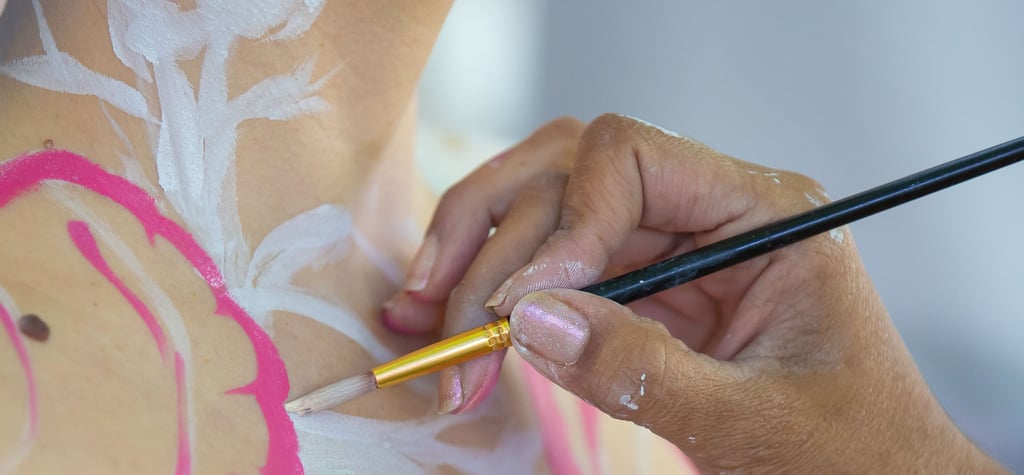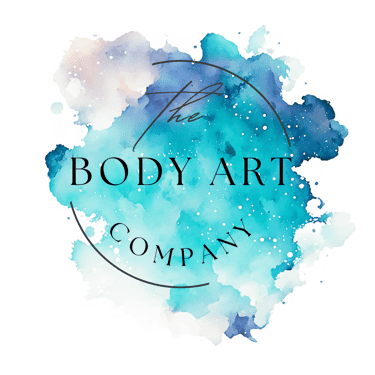The Techniques Used in Bodypainting: A Creative Exploration
Bodypainting, this fascinating art form that transforms the human body into a living canvas, is a demanding discipline blending creativity, technique, and mastery of materials. For artists who practice it, each project is an opportunity to explore different methods to bring ephemeral works to life. Here is an overview of the most commonly used techniques in bodypainting.


1. Brush Painting
Using a brush is one of the most classic and precise techniques in bodypainting. This method allows artists to define fine details, such as intricate patterns, textures, or shading effects. Brushes vary in size and shape, offering great flexibility for creating custom designs.
Advantages: Precise control, ideal for small details.
Disadvantages: Slower compared to other methods.
2. Airbrush
The airbrush is an essential tool for many bodypainting artists. It allows for the application of fine and even layers of paint, perfect for creating subtle gradients, light effects, or transparency effects.
Advantages: Quick application, professional and smooth finish.
Disadvantages: Requires specific equipment and a good level of technical expertise.
3. Mixed Techniques
Many artists combine brushes and airbrushes to take advantage of the strengths of each method. For example, the airbrush can be used for backgrounds or volume effects, while brushes are reserved for finishing touches.
Advantages: Versatility and the ability to create rich textures.
Disadvantages: Requires good organization to coordinate the techniques.
4. Using Stencils
Stencils are very practical accessories for creating repetitive patterns or precise details. They can be purchased pre-made or custom-designed to meet specific needs.
Advantages: Time-saving, uniform patterns.
Disadvantages: Results may appear too rigid if not well integrated into the overall design.
5. UV and Fluorescent Bodypainting
UV bodypainting uses paints reactive to ultraviolet light, creating spectacular effects in the dark. This style is particularly appreciated in artistic performances, shows, and festivals.
Advantages: Striking visual impact, amazing effect under black light.
Disadvantages: Dependent on specific lighting conditions.
6. Incorporating Accessories
Accessories, such as headpieces, jewelry, or 3D elements, add an extra dimension to bodypainting. They complete the design by adding volume and texture, sometimes transforming the model into a living character.
Advantages: Enhances the creation, allows storytelling.
Disadvantages: Requires additional preparation time.
7. Textures and Sponges
Sponges and other textured tools are used to create special effects, such as scales, animal skins, or natural textures. This technique offers a quick alternative to brushes for large surfaces.
Advantages: Easy to use, fast.
Disadvantages: Less suited for detailed work.
Conclusion
Bodypainting is a discipline rich in techniques and creative possibilities. Each method has its strengths and limitations, but it is often their combination that allows for the creation of unique and striking works. For artists, it is above all about expressing their vision and collaborating with the model to create a true living masterpiece.


